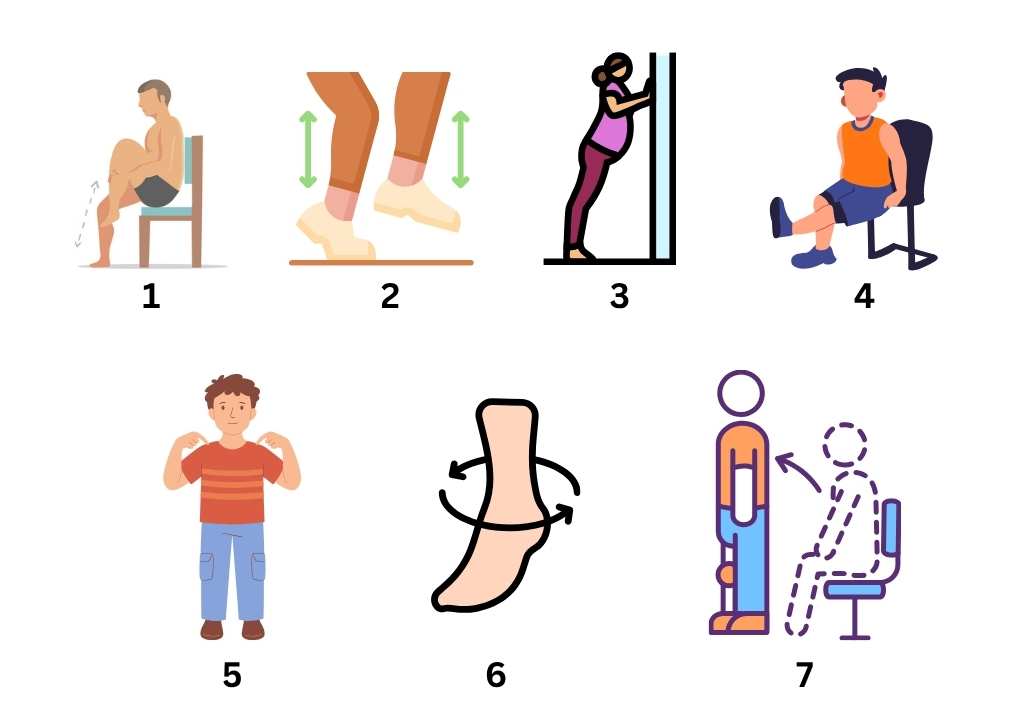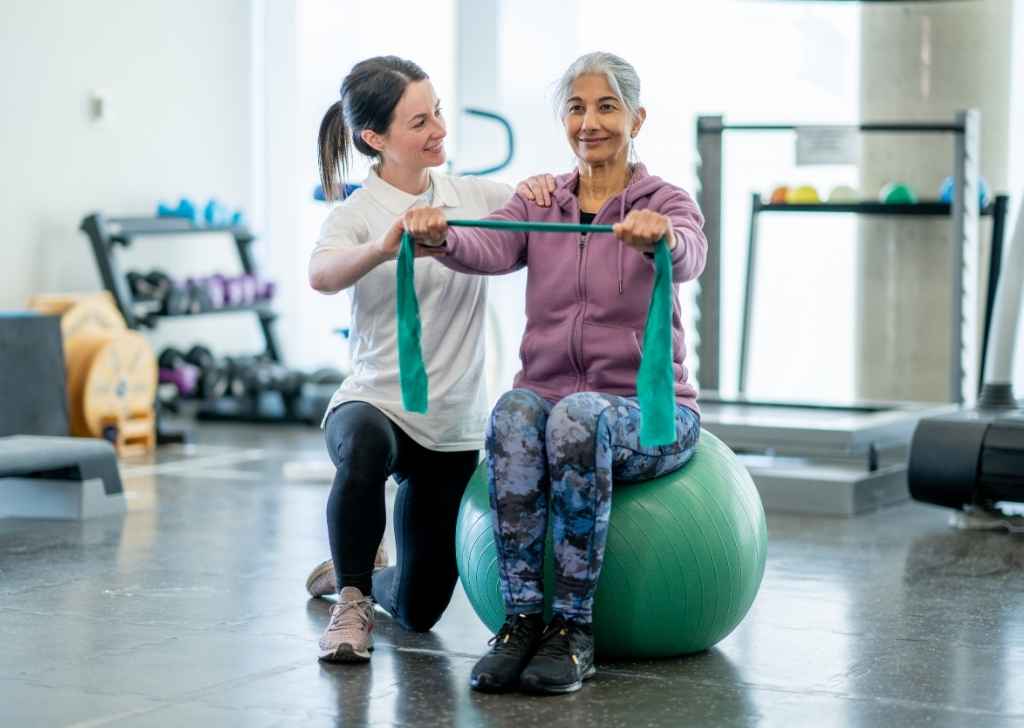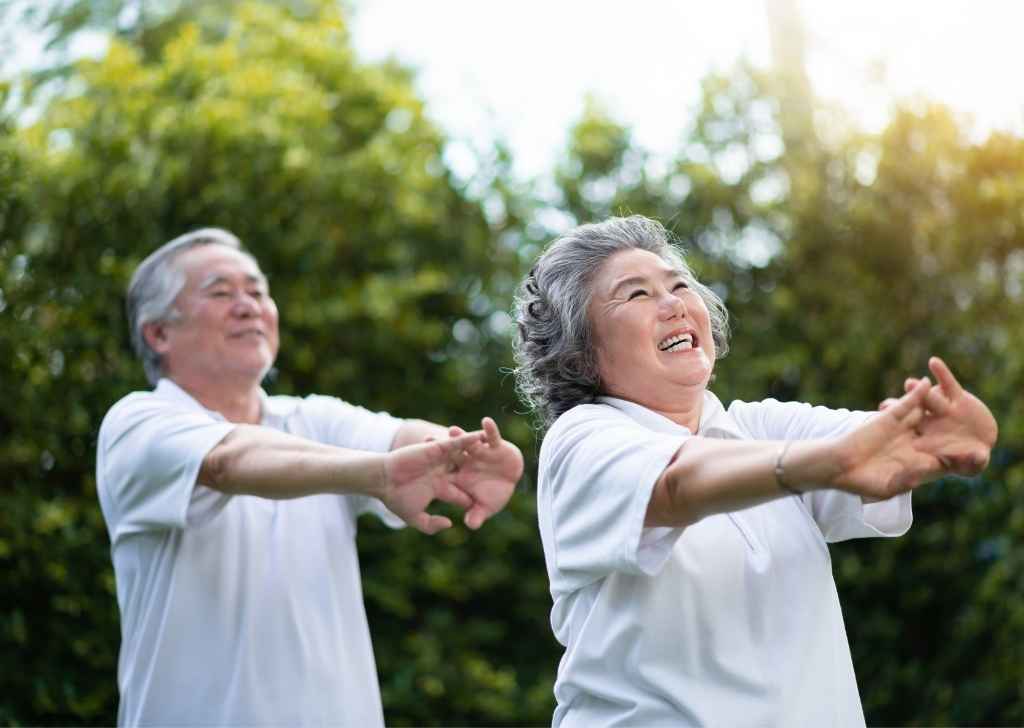Helping your elderly parents stay active doesn’t always require a trip to a clinic. With the right approach, physiotherapy at home can be both effective and safe. Whether they’re recovering from surgery, dealing with chronic pain, or simply need to maintain mobility, these home routines can support their independence and well-being.
At Regenesis Physiotherapy, a trusted physiotherapy center in Subang Jaya, we’ve helped countless families create personalised, home-friendly routines tailored to each individual’s limitations and goals. For conditions like joint stiffness, muscle weakness, or even post-stroke care, our manual therapy services often go hand-in-hand with structured home exercises making recovery faster, smoother, and more empowering for the patient.
Regenesis is also one of the few physiotherapy providers in Klang Valley that offers professional house-call services, bringing quality care directly to your doorstep for those with mobility challenges.
Can Physiotherapy Be Done at Home?
Yes, physiotherapy can absolutely be done at home, and for many, it’s even more effective this way. With guidance from a trained physiotherapist, home sessions can be tailored around the individual’s condition, lifestyle, and comfort level.
Whether it’s shoulder pain treatment or physiotherapy for elderly recovering from a fall, the goal remains the same: restore movement, reduce pain, and promote safe independence. The home environment allows for better customization using furniture as props, practicing movements relevant to daily routines, and fostering long-term adherence since it’s done in a stress-free space.
What’s most important is consistency and correct form. Home physiotherapy isn’t a watered-down version of clinic sessions, it can be just as targeted and progressive when done under the right supervision.
7 Simple Home Exercises to Improve Strength & Mobility for Seniors

1. Seated Marching
This is an excellent warm-up that boosts blood circulation and engages the lower body without standing.
How to do it:
Sit upright on a sturdy chair. Slowly lift one knee toward the chest, then lower it and repeat with the other leg. Aim for 10-15 reps per leg.
Why it works:
Improves hip mobility and strengthens thigh muscles—great for overall walking stability.
2. Heel Raises
This simple movement enhances ankle strength and balance.
How to do it:
Stand while holding the back of a chair. Raise both heels off the ground, standing on your toes. Hold for 3 seconds, then lower. Repeat 10 times.
Why it works:
Strengthens calves and supports better balance, which helps prevent falls.
3. Wall Push-Ups
An effective upper-body workout that’s easier on the joints compared to floor push-ups.
How to do it:
Stand about an arm’s length from a wall. Place your palms on the wall at shoulder height. Slowly bend your elbows to bring your chest toward the wall, then push back. Repeat 10-15 times.
Why it works:
Improves upper-body strength and posture, especially beneficial for those experiencing shoulder pain at home.
4. Seated Leg Extensions
A great exercise for maintaining knee strength and reducing joint stiffness.
How to do it:
Sit upright in a chair. Extend one leg forward until it’s straight, hold for 2 seconds, and lower it. Repeat 10 times on each leg.
Why it works:
Helps with walking endurance and makes climbing stairs easier. This is key for those needing physiotherapy for back pain at home.
5. Shoulder Rolls
Loosens tight shoulder muscles and improves upper-body flexibility.
How to do it:
Sit or stand. Roll your shoulders forward in a circular motion 10 times, then repeat in the opposite direction.
Why it works:
This is especially helpful for seniors experiencing shoulder pain or stiffness. You can also explore our dedicated services for neck and shoulder pain to further enhance recovery.
6. Ankle Alphabet
This low-stress exercise improves ankle flexibility and coordination.
How to do it:
While seated, lift one foot slightly off the floor and trace the alphabet in the air with your toes. Switch feet after each round.
Why it works:
Supports ankle mobility and blood flow, which is crucial for seniors who spend long hours sitting.
7. Sit-to-Stand Practice
This functional movement mimics the daily task of getting up from a chair.
How to do it:
From a seated position, stand up slowly without using your hands if possible, then sit back down. Repeat 10 times.
Why it works:
Strengthens leg muscles and builds confidence — we highly recommend this in any physiotherapy for elderly at home plan that restores mobility.
How to Make These Exercises Part of a Daily Routine

Having these simple exercises done consistently can be a game changer to your parent’s long-term mobility in their golden years. Here’s how to turn these into a sustainable, effective rehabilitation habit:
Set a Specific Time and Stick to It
Consistency starts with scheduling. Choose a time that works best for your parent’s energy levels, typically mid-morning or early evening. Sticking to the same time every day helps build a sense of routine and minimizes forgetfulness, particularly for elderly individuals with memory difficulties.
In addition, try pairing physiotherapy with another daily ritual like brushing teeth, breakfast, or watching the news. This type of “habit stacking” makes it easier to maintain.
Prepare a Dedicated, Safe Exercise Space
Designate a part of the home as an exercise-friendly zone. This doesn’t have to be fancy, a quiet corner with a sturdy chair, flat surface, and non-slip mat is sufficient. The space should be free from clutter, with good lighting and supportive furniture.
For additional safety, remove all rugs or cables that could cause tripping, especially if balance is a concern. If your budget allows it, try adding grab bars or use kitchen counters as stable support for exercises involving standing.
Keep Sessions Short but Purposeful
Aim for 10–20 minutes per day instead of long, fatiguing sessions. Physiotherapy for the elderly at home should be manageable, it’s more important that movements are done slowly, correctly, and without strain.
Overexertion can lead to frustration or injury, thus, try starting with 5–6 exercises and then increase gradually depending on comfort and confidence.
Use Simple Tools to Track Progress
Use a daily log or visual calendar to record which exercises were completed. This not only keeps the routine on track but builds motivation by showing tangible progress.
Bonus tip: Some families find success using whiteboards or sticker systems as visual encouragement for older adults.
Involve a Support Person or Family Member
Supervision can make all the difference for safety and emotional support. Whether it’s a caregiver, spouse, or grandchild, having someone nearby to guide or join in makes the experience more interactive and enjoyable. It also gives family members peace of mind, knowing their loved one is exercising safely.
Integrate Rest and Feedback
Don’t push through pain or fatigue. Each session should end with a short rest and a check-in. This simple reflection helps identify discomfort early and adjust future routines accordingly.
Listening to the body is especially critical when doing physiotherapy for stroke patients at home or for individuals recovering from surgery.
Signs to Watch For While Exercising at Home

While home physiotherapy can be safe and effective, it’s crucial to recognise the signs that something might not be right. This is especially true when supporting elderly parents or individuals with chronic conditions. Not all discomfort is harmful, but knowing the difference between normal fatigue and warning signs can help avoid injury or setbacks.
Sudden or Sharp Pain
Mild muscle soreness is normal, especially in the beginning stages of a routine. However, sharp, stabbing, or sudden pain is a red flag. If a particular movement causes intense discomfort that lingers or worsens after the session, stop immediately. Continuing could worsen inflammation or cause a strain.
Dizziness or Light-headedness
Feeling dizzy during or after physiotherapy at home can signal low blood pressure, dehydration, or cardiovascular stress. This is especially risky during balance-related exercises or transitions from sitting to standing. Always have a chair or support surface nearby to prevent falls.
If dizziness happens more than once, pause the routine and seek professional evaluation before continuing.
Excessive Shortness of Breath
While mild exertion may cause increased breathing, a feeling of breathlessness that doesn’t resolve with rest is a warning. This is particularly important in patients with heart conditions, post-stroke recovery, or limited lung function. Always prioritise safety over intensity. If your parent is unable to speak in full sentences while exercising, stop the activity.
Visible Swelling or Joint Warmth
Localized swelling, redness, or warmth around a joint after exercise can be signs of inflammation or improper technique. Monitor knees, ankles, shoulders, and wrists closely. This is common in back pain physiotherapy treatment at home, where joints compensate for weak core support. If swelling becomes frequent, it’s best to reassess the routine with a professional.
When to Seek In-Person Physiotherapy Support

There comes a point where guided hands-on care becomes necessary. Home exercises are foundational, but if progress plateaus or new symptoms emerge, in-person evaluation ensures issues are caught early and treated appropriately.
Red Flags to Watch For
Some warning signs that signal the need for clinical attention include:
- Increasing pain that doesn’t respond to rest
- Sudden swelling or visible inflammation
- Numbness or tingling in the limbs
- Difficulty walking or standing without support
- New or worsening posture imbalances
These signs could point to underlying conditions that require professional diagnostics and targeted treatment beyond what home exercises offer.
Frequently Asked Questions (FAQ) – Physiotherapy at Home for Elderly
Yes, especially for seniors with reduced mobility, chronic pain, or post-hospitalisation recovery. Home physiotherapy allows personalised care in a familiar, stress-free environment, which can enhance comfort and compliance. Regenesis physiotherapists tailor programs to each individual's physical condition and goals.
Ideally, light to moderate exercises should be done 3 to 5 times a week. Frequency may vary depending on the condition — post-stroke patients may need more frequent sessions, while those recovering from back pain or joint stiffness may follow a gentler schedule. A professional assessment can determine the right plan.
Motivation can be a challenge. Try breaking the routine into shorter sessions, incorporating music, or doing the exercises together. Celebrate small milestones and reassure them of the long-term benefits. A physiotherapist from Regenesis can help reframe exercises in ways that feel less clinical and more engaging.
Some private insurance plans do offer coverage for physiotherapy including home visits. However, all this is up to the discretion of your insurance provider. If available, Regenesis can assist with documentation for insurance claims if needed.
Home therapy works well for those who have mobility limitations or need rehabilitation after surgery. As strength and confidence improve, some may benefit from transitioning to in-clinic treatments that offer advanced equipment and closer monitoring. This is usually a decision made with your physiotherapist based on progress.
You’re Doing a Great Job — Now Let’s Make Recovery Easier at Home

If you’re looking for personalised, compassionate, and effective physiotherapy at home in Subang Jaya, Regenesis is here to help. Whether your parent needs support recovering from a stroke, managing joint pain, or improving mobility with age, our licensed physiotherapists deliver high-quality care right in the comfort of your home.
Book your first session with us today! Our team will guide you through every step, from assessment to tailored exercise routines. We’ll also help set realistic goals and track progress to ensure long-term improvements.






